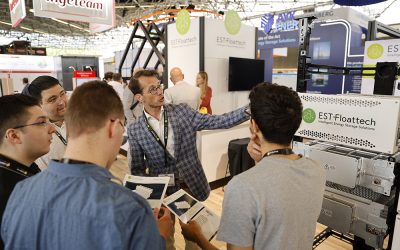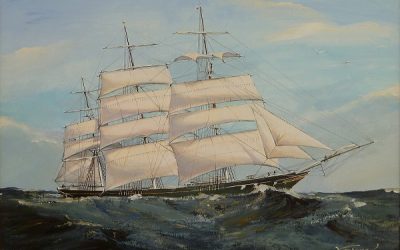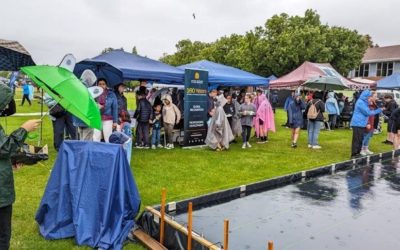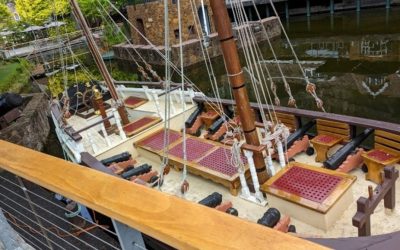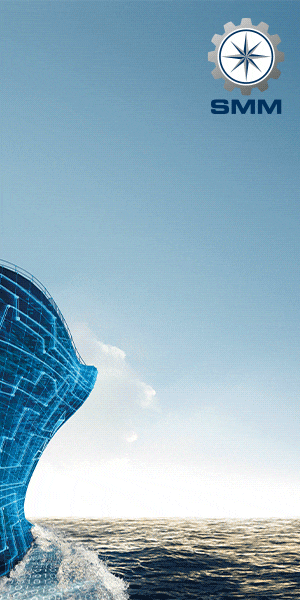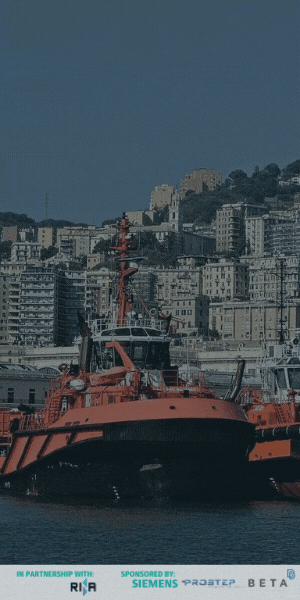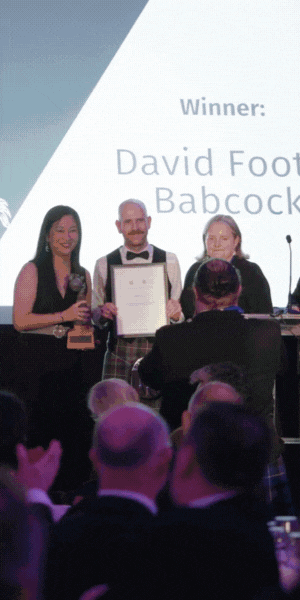The Naval Architect: June 2017
First settled some 230,000 years ago, Wales was an international commerce centre by the time ancient Greeks arrived searching for tin. Celtic Britons gave way to the Romans, who were followed by the Anglo-Saxons. Finally, centuries later, delegates from across the maritime industry made their way to the Welsh capital, Cardiff, for three days of technological insight at COMPIT 2017.
In overview, sea-breaking concepts included voluntary slow steaming aimed at reaching port faster; exploiting Big Data beyond the still infant Digital Twin to drive simulation by parametric regression of large and disparate but analogous data sets; and the handling of encounters between COLREG compliant ASVs, UAVs and “rogue” vessels. None are new per-se, but they brought an arguably unprecedented thrust, pushing forward an otherwise slow to react industry.
Day 1 – a means to design
COMPIT 2017 started off gingerly with David Andrews, University College London, arguing the importance of selecting a “style” of design in the early ship design process, especially when working with complex multi-functional vessels. Mark Roth, TU Delft, reported on the application of network theory in pursuing an understanding of the physical relationships in General Arrangements by applying the TU Delft packing approach coupled with centrality measures to rank nodes and quantitatively assess the qualitative properties of the arrangement.
The well-worked packing approach was also benchmarked by Siebe Cieerad and a team from The Ministry of Defence (The Netherlands) in re-designing a Walrus class submarine; a great way to assess legacy while employing leading edge strategies such as extensive and CAD-connected use of virtual reality.
Rachel Pawling, University College London, called for a more holistic approach to the early stages of ship design. Online implementation of a Design Building Block approach and Queuing Theory applied to “design systems rather than ships & craft” were reviewed.
Big Data was lingering in the work of Ted Jaspers, TU Delft, who presented “Elucidating Families of Ship Designs using Clustering Algorithms”, and Javascript was showcased by NTNU’s Henrique Gaspar as being sadly underused in our industry.
“4GD Framework in Ship Design”, by NTNU’s Greta Levišauskaitė, clearly presented how the strategic application of cutting-edge technology is all too often blocked by the underlying requirement to change established mindsets. In this scenario, successfully combining rich product lifecycle management (PLM) systems, efficient design tools and a 3D model made of thousands of parts requires innovative thinking, which can unfortunately be perceived as risk.
Epilysis, a new Finite Element solver developed by betaCAE, Greece, was identified as faster than current methods, and Siemens illustrated how their ongoing development will transform vessel development from a discrete sequence to a continuous process that feeds real-life data into the design process. An interesting look at traditional design decision-making based on the system and component levels came from Sabah Alwan, NTNU, who found that a Process Integration and Design Optimisation strategy (PIDO) requires well experienced, discerning engineers to interpret the results.
Offering a taste of the autonomy presented on day two, Heinrich Grümmer, aXatlantic, presented a first principles, self-righting, solar powered ASV designed to go transatlantic propelled by a steerable, ring-driven thruster.
Yard 4.0 quickly became the focus of the afternoon. A team from SENER described a PLM-integrated approach to the age-old puzzle of quasi-sister ship design and production, while a method for production work prediction, based on a four tier hierarchical organisation of empirical data collected during past projects, was presented by Lode Huijgens of TU Delft. Authors from Seoul National University, Xinnos Co. and Korea Maritime and Ocean University described how a Process Centric Modelling Method was applied to Block Transportation shipyard logistics, thereby improving build efficiency.
Day 2 – sensing a change
Coltraco Ultrasonics’ CEO, Carl Hunter, began day two discussing how inadequate fire regulation and onboard fire-fighting systems have become in an age of difficult to reach cargo and ill-maintained gas and water delivery lines. He particularly focussed on how onboard sensors can aid a vessel’s fire safety. This led into subsequent discussion of the use of wireless communications in condition monitoring by the University of Strathclyde’s Anna Michala, a concern that was shown to turn crucial when addressing security, especially in the case of military vessels, according to Scott Patterson, Babcock International.
Steering the pure technology course, Gunnar Brink of Fraunhofer Institute of Optronics, System Technologies and Image Exploitation charted the lack of technology for deep-sea floor mapping (acoustical, light and electromagnetic), the same technology required by underwater communications.
Autonomous Vessels were the subject of many interesting presentations, touching upon path-selection, collision avoidance, navigation and decision making. Fast ASVs were shown to efficiently adhere to COLREGs (Collision Regulations) by Howard Tripp, ASV LTD., while, according to work undertaken by Yogang Singh and fellow researchers at the University of Plymouth, it is possible to compute path cost and length of autonomous journeys to ensure travel effectiveness using an obstacle-repulsive/goal attractive algorithm. Perhaps most interesting was the MAXCMAS project presented by representatives from Lloyd’s Register, which discussed collision avoidance when at least one converging vessel does not comply with COLREG – a very pragmatic study that will extend into the times of ASV-only navigation. In addition, Axel Hahn from the University of Oldenburg demonstrated how a research team built and sailed a testbed ASV with the aim of verifying and validating e-navigation technologies.
Stephan Procee, NHL Hogeschool, argued that, while a seemingly good idea, bringing augmented reality to the ship’s bridge by, for example, showing vessels made invisible by fog but tracked by radar on the windscreen using heads up display technology (HUD), is hampered by various considerations, not least culture and the value and significance attributed to colours by different people. Seppo Helle, University of Turku, mentioned the generally overlooked virtual reality (VR) olfactory, gustatory, aural, and haptic methods, and importantly point out mental and physical workload demand and rated performance and frustration levels – key factors if VR is to be accepted by operators. Added to this was Hahn’s (University of Oldenburg) discussion of damage minimisation strategies when collision is unavoidable, such as by steering a least-energy impact course – an excellent example of applied research!
The history and future of VR were subsequently discussed by Denis Morais, SSI, followed by recognition by DNV GL’s Christian Cabos of the need for continued human presence when remotely performing hull surveys with drones and VR to provide line-of-sight piloting and on-site hull condition assessment.
Day 3 – end game
Day 3 illustrated how to exploit hundreds of millions of daily AIS (Automatic Identification System) transmissions ranging from ship’s position to operational data for commercial, logistics and condition monitoring. André Keane, Ulstein, picked up on the subject of how to exploit heterogeneous data referring to the same measures, introduced earlier by Siemens’ Patrick Müller (“Marine 4.0 – Condition Monitoring for the Future”), and explored the Fast-Track Concept Design Analysis tool developed by Ulstein to integrate a multi-disciplinary platform that takes into account the volatile, uncertain, complex, ambiguous world.
Instrumental to expanding the Digital Twin model to learn from many other ships proposed by the author, Hideo Orihara (Japan Maritime United Corporation) collected ship performance data on an operating bulk carrier to be used in estimations based on parametric regression of real ship data.
Enter C3PO and R2D2 of Star Wars fame, only underwater: CADDY, a diver assistant robot developed by Marco Bibuli, won the DNV GL COMPIT Award, and of all the burgeoning technologies of late it is the one that stands out. “The robot communicates with the diver by understanding gestures and acknowledges by light signals and task execution”, while operating in less than ideal visibility and adapting to the unique variants specific to each master. Will CADDY read the diver’s mind by COMPIT 2018? Last but not least, Tracy Plowman (DNV GL) and Volker Bertram (DNV GL) discussed “Maritime training in the 21st Century”, touching upon the rapidly and vastly changing culture of young people going through higher education, the paradigm shift offered by technology commonly used outside academia but not within, shortening of courses in parallel with extension of training to life-long periods, and indirectly connecting to Rachel Pawling (UCL), who argued that the current “21st Century students are being taught 19th Century methods using 20th Century tools”.
Bertram’s “Future of Shipbuilding and Shipping – A Technology Vision”, was a pragmatic, if not at times sober yet vibrant critical review of the industry which does not exploit the potential offered by currently common technologies and strategies. Many passages deserve highlighting, such as the strategic adoption of low speed steaming, the persistence of strong and cheap steel, time-based image processing for automatic condition assessment, lengthening of ships lives, the inception of metal foams and disposal-managed composites (perhaps reducing the requirement for recycling), anti-fouling nano-coatings, LNG fuels rendering heavy machinery obsolete, fuel cells and batteries, air lubrication, wind assisted propulsion, knowledge based computation. Other predicted developments already exist in commercial form, such as smart glasses (ex. the interactive Daqri helmet) and 3D printing (the first ever 3D printed propeller was submitted for Class approval in May).
Castello di Pavone, situated in the Italian Alps, will play host to COMPIT 2018. The castle’s halls are worthy of the undoubted excellence of the papers to be read; dates are blocked, steady as she goes!
Author
Nick Danese is the founder of Nick Danese Applied Research (NDAR), specialising in engineering and system integration around unique software products like ShipConstructor, MAESTRO, ShipWeight, GHS, Navisworks, etc. He regularly presents at various ship design, ship building and related research conferences.
